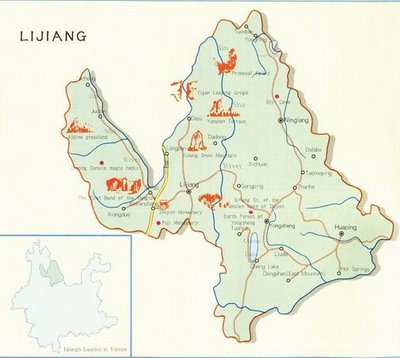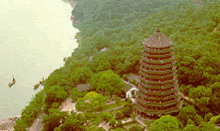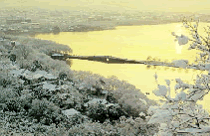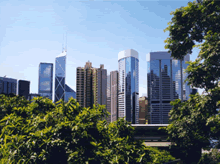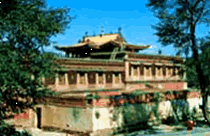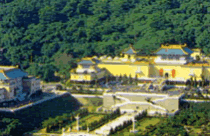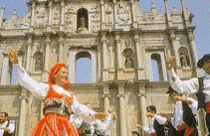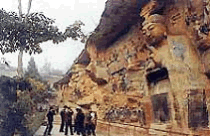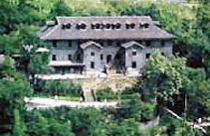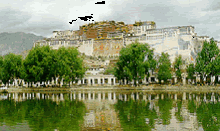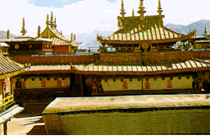As the capital of China, Beijing has a history of over 3000 years. She is the center of China's politics, culture, science, commerce, international interchanging, etc. At the same time, she has reserved her ancient view, so she is also famous for touring. There are various scenic spots in Beijing, many of them are very famous. Following, you can not only have a general understanding of those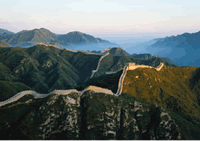 famous spots, but also have a virtual tour to these places.
famous spots, but also have a virtual tour to these places.
Beijing is China's capital and the political, economic, cultural, technological center of the country. Beijing has a long history of over five thousand years and was the capital city of Yuan, Ming and Qing dynasties, and in here 34 emperors ruled China. A long history has left numerous famous historical sites which possess great aesthetic and cultural values. Thus Beijing became a famous tourism city with the reform and opening up of China. In Beijing, you'll see a large collection of ancient imperial palaces, imperial gardens, temples, monasteries, imperial tombs and pagodas. There are also lots of museums, exhibition halls and modern buildings.
Beijing is one of the Six China's Ancient Capitals. Forbidden City, the Great Wall, Zhoukoudian, the Summer Palace and Tiantan (Temple of Heaven) have been listed on World Cultural Heritage by UN. Besides, there are countless historic sites in Beijing, such as Shijingshan, Ditan (Temple of Earth), Beihai, Hutong (small alleys) and so on. For travelers, the best season is fall while in other seasons, it's terribly windy or frozenly cold.
Recommended Scenic Spots
Forbidden City
The Forbidden City, so called because it was off limits to commoners for 500 years, is the largest and best-preserved cluster of ancient buildings in China. It was home to two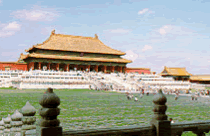 dynasties of emperors -the Ming and the Qing - who didn't stray from this pleasure dome unless they absolutely had to.
dynasties of emperors -the Ming and the Qing - who didn't stray from this pleasure dome unless they absolutely had to.
The Beijing authorities insist on calling this place the Palace Museum. Whatever its official name, it's open daily from 8.30 am to 5 pm (the last admission tickets are sold at 3.30 pm). Two hundred years ago the admission price would have been instant death, but this has dropped considerably to 85 Yuan includes rental of a cassette tape for a self guided tour, although you can enter for Y60 without the tape. For the tape to make sense, you must enter the Forbidden City from the southern gate and exit from the northern gate. The tape is available in several languages.
The basic layout of the Forbidden City was built between 1406 and 1420 by Emperor Yong Le, who commanded up to a million labourers. From this palace the emperors governed China - often rather erratically as they tended to become lost in this self-contained little word and allocated real power to the court eunuchs. One emperor devoted his entire career to carpentry - when an earthquake struck (an ominous sign for an emperor ) he was delighted, since it gave him a chance to renovate.
The buildings now seen are mostly post 18th century, as are a lot of restored of rebuilt structures around Beijing. The palace was constantly going up in flames - a lantern festival combined with a sudden gust of Gobi wind would easily do the trick, as would a fireworks display. The moat around the palace, now used for boating, came in handy since the local fire brigade was considered too lowly to quench the royal flames.
In 1664, the Manchus stormed in and burned the palace to the ground. It was not just the buildings that went up in smoke, but rare books, paintings and scrolls. In this century there have been two major lootings of the palace: by the Japanese forces and the Kuomintang. The latter, on the eve of the Communist takeover in 1949, removed thousands of crates of relics to Taiwan where they are now on display in Taipei's National Palace Museum. The gaps have been filled by bringing treasures (old, newly discovered and fake ) from other parts of China.
Summer Palace
One of the finest sights in Beijing, the Summer Palace includes an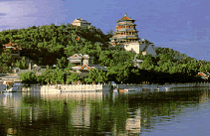 immense park that tends to pack out during the summer months. The site had long been a royal garden and was considerably enlarged and embellished by Emperor Qianlong in the 18th century. It was later abandoned. Empress Dowager Cixi began rebuilding in 1888 using money that was supposedly reserved for the construction of a modern navy, although she did restore a marble boat sits immobile at the edge of the lake. In 1900 foreign troops, annoyed by the Boxer Rebellion, had a go at torching the Summer Palace. Restorations took place a few years later and a major renovation occurred after 1949,by which time the palace had once more fallen into disrepair.
immense park that tends to pack out during the summer months. The site had long been a royal garden and was considerably enlarged and embellished by Emperor Qianlong in the 18th century. It was later abandoned. Empress Dowager Cixi began rebuilding in 1888 using money that was supposedly reserved for the construction of a modern navy, although she did restore a marble boat sits immobile at the edge of the lake. In 1900 foreign troops, annoyed by the Boxer Rebellion, had a go at torching the Summer Palace. Restorations took place a few years later and a major renovation occurred after 1949,by which time the palace had once more fallen into disrepair.
The original palace was used as a summer residence. It was divided into four sections: court reception, residences, temples and strolling or sightseeing areas. Three-quarters of the park is occupied by Kunming Lake, and most items of structural interest are towards the east or north gates.
The main building is the Benevolence & Longevity Hall, just off the lake towards the east gate. It houses a hardwood throne and has a courtyard with bronze animals. Along the northern shore of the lake is the Long Corridor, over 700m long, which is decorated with mythical scenes. If the paint looks new, it's because a lot of pictures were whitewashed during the Cultural Revolution.
On Longevity Hill are a number of temples. The Precious Clouds Pavilion on the western slopes is one of the few structures to escape destruction by the Anglo-French forces. It contains some elaborate bronzes. At the top of the hill sits the Buddhist Sea of Wisdom Temple, made of glazed tiles; good views of the lake can be had from this spot.
Other sights are largely associated with Empress Cixi, like the place where she kept Emperor Guangxu under house arrest, the place where she celebrated her birthdays and held exhibitions of her furniture and memorabilia.
Another noteworthy feature of the Summer Palace is the 17-arch bridge spanning 150m to South Lake Island; on the mainland side is a beautiful bronze ox. Also note the Jade Belt Bridge on the mid-west side of the lake and the Harmonious Interest Garden at the northeast end, which is a copy of a Wuxi garden.
The park is about 12km northwest of the center of Beijing. The easiest way to get there on public transport is to take the subway to Xizhimen (close to the zoo), then a minibus. Bus No 332 from the zoo is slower, but will get you there eventually. Lots of minibuses return to the city center from the Summer Palace, but get the price and destination settled before departure. You can also get there by bicycle - it takes about 1 1/2 to two hours from the center of town.
Admission for foreigners is a steep 45 Yuan plus. There are some additional fees for various sights inside the walls.
Tiantan Park
The most perfect example of Ming architecture, Tiantan (the Temple of Heaven) has come to symbolize Beijing. Its lines appear on countless pieces of tourist literature and as a brand name for a wide range of products from Tiger Balm to plumbing fixtures. It is set in a 267 hectare park, with four gates at the compass points, and is bounded by w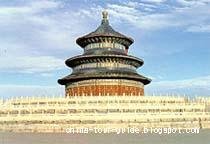 alls to the north and east. It originally functioned as a vast stage for solemn rites performed by the Son of Heaven, who came here to pray for good harvests, seek divine clearance and atone for the sins of the people.
alls to the north and east. It originally functioned as a vast stage for solemn rites performed by the Son of Heaven, who came here to pray for good harvests, seek divine clearance and atone for the sins of the people.
The temples, seen in aerial perspective, are round and the bases are square, seen in aerial perspective, are round and the bases are square, deriving from the ancient Chinese belief that heaven is round, and the earth is square. Thus the northern end of the park is semi-circular and the southern end is square.
Tiantan was considered highly sacred ground and it was here that the emperor performed the major ceremonial rites of the year. The least hitch in any part of the proceedings was regarded as an ill omen, and it was thought that the nation's future was thus decided.
The 5m-high Round Altar was constructed in 1530 and rebuilt in 1740. It is composed of white marble arrayed in three tiers, and its geometry revolves around the imperial number nine. Odd numbers were considered heavenly, and nine is the largest single-digit odd number. The top tier, thought to symbolize heaven, has nine rings of stones, with each ring composed of multiples of nine stones, so that the ninth ring has 81 stones. The number of stairs and balustrades are also multiples of nine. If you stand in the center of the upper terrace and say something, the sound waves are bounced off the marble balustrades, amplifying your voice (nine times?).
Just north of the altar, surrounding the entrance to the Imperial Vault of Heaven, is the Echo Wall, 65m in diameter. This enables a whisper to travel clearly from one end to your friend's ear at the other, that is, if there's not a tour group in the middle.
The octagonal Imperial Vault of Heaven was built at the same time as the Round Altar, and is structured along the lines of the older Hall of Prayer for Good Harvests. It used to contain tablets of the emperor's ancestors, which were used in the winter solstice ceremony. Proceeding up from the Imperial Vault is a walkway: to the left is a molehill composed of excess dirt dumped from digging air-raid shelters, and to the right is a rash of souvenir shops.
The dominant feature of the whole complex is the Hall of Prayer for Good Harvests, a magnificent piece mounted on a three-tiered marble terrace. Amazingly, the wooden pillars ingeniously support the ceiling without nails or cement -for a building 38m high and 30m in diameter that's an accomplishment unmatched until Lego was invented. Built in 1420, the Hall was burnt to cinders in 1889 and heads rolled in apportioning blame. A faithful reproduction based on Ming architectural methods was erected the following year.
The Great Wall
Also known to the Chinese as the '10,000 Li Wall', the Great Wall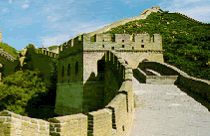 stretches from Shanhaiguan Pass on the east coast to Jiayuguan Pass in the Gobi Desert. Standard histories emphasize the unity of the wall. The 'original' wall was begun 2000 years ago during the Qin Dynasty (221-207 BC), when China was unified under Emperor Oin Shihuang. Separate walls, constructed by independent kingdoms to keep out marauding nomads, were linked up. The effort required hundreds of thousands of workers, many of them political prisoners, and 10 years of hard labor under General Meng Tian. An estimated 180 million cubic metres of rammed earth was used to form the core of the original wall, and legend has it that one of the building materials used was the bodies of deceased workers.
stretches from Shanhaiguan Pass on the east coast to Jiayuguan Pass in the Gobi Desert. Standard histories emphasize the unity of the wall. The 'original' wall was begun 2000 years ago during the Qin Dynasty (221-207 BC), when China was unified under Emperor Oin Shihuang. Separate walls, constructed by independent kingdoms to keep out marauding nomads, were linked up. The effort required hundreds of thousands of workers, many of them political prisoners, and 10 years of hard labor under General Meng Tian. An estimated 180 million cubic metres of rammed earth was used to form the core of the original wall, and legend has it that one of the building materials used was the bodies of deceased workers.
The wall never really did perform its function as a defence line to keep invaders out. As Genghis Khan supposedly said, 'The strength of a wall depends on the courage of those who defend it'. Sentries could be bribed. However, it did work very well as a kind of elevated highway, transporting men and equipment across mountainous terrain. Its beacon tower system, using smoke signals generated by burning wolves' dung, transmitted news of enemy movements quickly back to the capital.
The wall was largely forgotten after that. Lengthy sections of it returned to dust. The wall might have disappeared entirely had it not been rescued by the tourist industry. Several important sections have recently been rebuilt, dressed up with souvenir hops, restaurants and amusement park rides. Oddly, the depiction of the wall as an object of great beauty is a bizarre one. It's often been a symbol of tyranny, as the Berlin Wall once was. Badaling Great Wall
The majority of visitors see the Great Wall at Badaling, 70km northwest of Beijing at an elevation of 1000m. This section of the wall was restored in 1957, with the addition of guard rails. Since the 1980s, Badaling has become exceedingly crowded with visitors so a cable car was added to enhance the flow of tourist traffic.
There is an admission fee of Y25, which also gets you into the China Great Wall museum. You can spend plenty more for a tacky 'I Climbed the Great Wall' T-shirt, a talking panda doll, a cuckoo clock that plays 'The East Is Red' or a plastic reclining Buddha statue with a light-bulb in its mouth. For an additional fee you can get your snapshot taken aboard a camel and pretend to be Marco Polo.
Tian'anmen Gate
Tiananmen Gate, or the Gate of Heavenly Peace, bounds the northern end of Tiananmen Square in the center of Beijing. It was first built in 1417 during the Ming Emperor Yongle抯 reign as the principal entrance leading to the Forbidden City. At that time the gate was named Chengtianmen, but the wooden structure burned down in 1457 and was reerected in 1651 and renamed Tiananmen.
The gate stands 34 meters (112ft) high, has red stone walls, a wooden roof and contains five arched passages leading through its white marble base. The gate is surrounded by a moat, the Golden Water River, which was formed to guard the Imperial Palace. Five white marble bridges cross the river and lead to the passages of the gate. Ornamental marble and columns and stone lions decorate the front of the gate.
In imperial times the gate and Tiananmen Square were not accessible to the public. Often religious and military ceremonies were held and imperial edicts were announced from Tiananmen. It was also from the rostrum of the gate that Mao Zedong announced the establishment of the People抯 Republic of China on October 1, 1949.
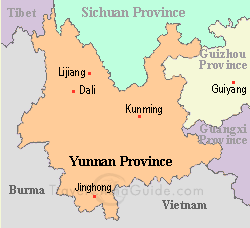 Location: located between 99
Location: located between 99![]() 23' - 101
23' - 101![]() 31' east longitude and 25
31' east longitude and 25![]() 59' - 27
59' - 27![]() 56' north latitude, and northwest of Yunnan province, middle reaches of Jinsha River
56' north latitude, and northwest of Yunnan province, middle reaches of Jinsha River![]() 23' - 101
23' - 101![]() 31'北纬25
31'北纬25![]() 59' - 27
59' - 27![]() 56',云南省西北方。
56',云南省西北方。 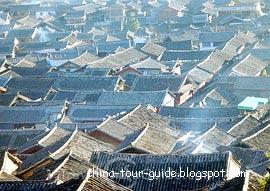 Climatic Features: distinctly vertical temperature difference, sufficient rainfall and clear division between dry seasons and humid seasons
Climatic Features: distinctly vertical temperature difference, sufficient rainfall and clear division between dry seasons and humid seasons![]() C -19.8
C -19.8![]() C
C